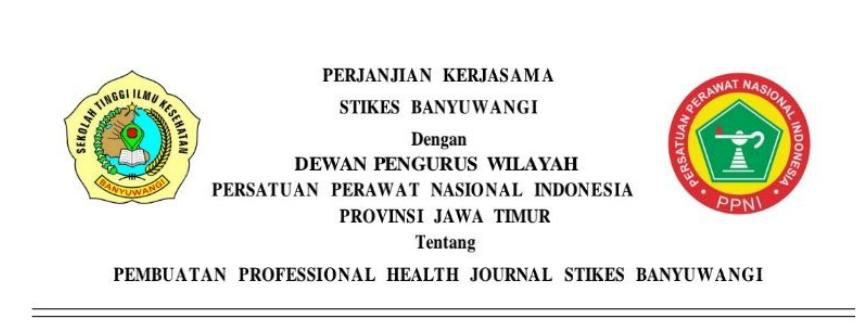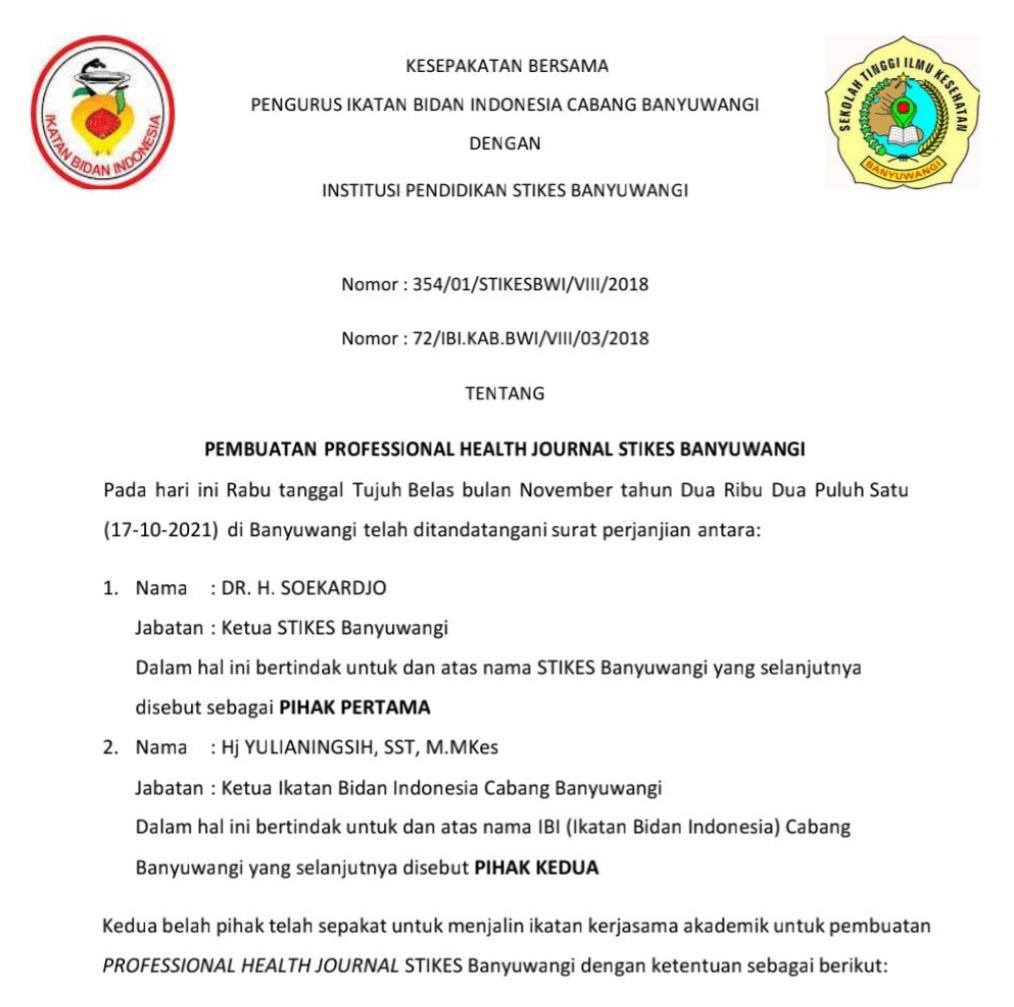Industrial Workers’s Regarding Compliance with the Use of Personal Protective Equipment: A Cross-Sectional Study
DOI:
https://doi.org/10.54832/phj.v7i1.1295Keywords:
Employee Attitudes, Compliance Behavior, Personal Protective EquipmentAbstract
Introduction: Workplace safety remains a critical issue, and using Personal Protective Equipment (PPE) is essential to reducing occupational hazards. Employee attitudes are important in shaping safety behaviors and compliance with protective measures.
Objectives: This study examined the relationship between employee attitudes and compliance with PPE use among workers in a manufacturing company.
Methods: A cross-sectional observational study was conducted with 35 employees selected through purposive sampling. Data were collected using two validated questionnaires: one assessing employee attitudes toward PPE use (10 items, Likert scale) and another evaluating PPE compliance (8 items, 0–3 scale). Based on median values, scores were categorized as positive or negative attitudes and compliant or non-compliant behavior. Data were analyzed using frequency distributions and the Chi-Square test.
Results: Most participants were male (71.4%) and aged 30–39 (42.8%). 57.1% of respondents reported positive attitudes toward PPE use, while 51.4% demonstrated compliance. Bivariate analysis showed a significant association between employee attitudes and PPE compliance (p = 0.002), with 75% of workers with positive attitudes adhering to PPE protocols compared to 20% with negative attitudes.
Conclusions: Positive safety attitudes were strongly linked to higher PPE compliance, emphasizing the need to integrate behavioral and organizational interventions alongside technical measures to promote workplace safety. Although the study provides valuable insights, its cross-sectional design and small sample size limit generalizability. Future studies should adopt longitudinal approaches and include diverse populations to guide targeted safety strategies.
Downloads
References
Baye, B. F., Baye, M. F., Teym, A., & Derseh, B. T. (2022). Utilization of Personal Protective Equipment and Its Associated Factors Among Large Scale Factory Workers in Debre Berhan Town, Ethiopia. Environmental Health Insights, 16. https://doi.org/10.1177/11786302221102324
Boakye, M. K., Adanu, S. K., Coffie, G. H., Adzivor, E. K., & Ayimah, J. C. (2022). Building Construction Artisans’ Level of Access to Personal Protective Equipment (PPE) and the Perceived Barriers and Motivating Factors of Adherence to Its Use. Journal of Environmental and Public Health, 2022. https://doi.org/10.1155/2022/4870731
Carra, S., Bottani, E., Vignali, G., Madonna, M., & Monica, L. (2024). Implementation of Behavior-Based Safety in the Workplace: A Review of Conceptual and Empirical Literature. Sustainability (Switzerland), 16(23). https://doi.org/10.3390/su162310195
Devila, Y., Santoso, Herniwanti, Rahayu, E. P., & Zaman, K. (2022). Factors Related To The Compliance In The Use Of Personal Protective Equipment At Production Employees At Pt Indofood Cbp Sukses Makmur Noodle Division, Pekanbaru. Science Midwifery, 10(5), 4449–4455. https://doi.org/10.35335/midwifery.v10i5.1089
Dyreborg, J., Lipscomb, H. J., Nielsen, K., Törner, M., Rasmussen, K., Frydendall, K. B., Bay, H., Gensby, U., Bengtsen, E., Guldenmund, F., & Kines, P. (2022). Safety interventions for the prevention of accidents at work: A systematic review. Campbell Systematic Reviews, 18(2). https://doi.org/10.1002/cl2.1234
Erika, Colia, E. S., & Ramli, S. (2024). relationship between compliance with the use of personal protective equipment (PPE) and occupational health and safety behavior (K3) on the performance of PT Enam Prakarsajaya Mandiri. International Journal of Health Sciences, 8(S1), 223–240. https://doi.org/10.53730/ijhs.v8ns1.14745
Ghassani, D., Rindu, R., & Supriyatna, R. (2023). Hubungan Antara Pengetahuan, Sikap Dan Pengawasan Terhadap Perilaku Pemakaian Apd Pada Pekerja Pabrik Plastik, Pressing Dan Casting Pt. Wijaya Karya Industri & Konstruksi Tahun 2022. Jurnal Kesehatan Masyarakat, 11(2), 207–211. https://doi.org/10.14710/jkm.v11i2.37926
Harvey, J., Bolam, H., Gregory, D., & Erdos, G. (2001). The effectiveness of training to change safety culture and attitudes within a highly regulated environment. Personnel Review, 30(6), 615–636. https://doi.org/10.1108/EUM0000000005976
Ketenagakerjaan, B. (2022). Profil K3 Nasional Indonesia 2022. https://satudata.kemnaker.go.id/satudata-public/2022/10/files/publikasi/1675652225177_Profil%2520K3%2520Nasional%25202022.pdf?utm_source=chatgpt.com
Khoshakhlagh, A. H., Malakoutikhah, M., Park, J. W., Kodnoueieh, M. D., Boroujeni, Z. R., Bahrami, M., & Ramezani, F. (2024). Assessing personal protective equipment usage and its correlation with knowledge, attitudes, performance, and safety culture among workers in small and medium-sized enterprises. BMC Public Health, 24(1), 1–9. https://doi.org/10.1186/s12889-024-19517-3
Latif, F., Taswin, T., Fitriani, F., & Muh.Taufiq, L. O. (2023). Knowledge and Attitude with the Compliance of the use of Personal Protective Equipment (PPE) for Cleaning Officers. Jurnal Ilmiah Kesehatan Sandi Husada, 12(2), 339–345. https://doi.org/10.35816/jiskh.v12i2.1081
Malwi, U. S., Fahlevi, M. I., Fadillah, M., & Putra, O. (2024). Factors Related To Compliance Use Of Personal Protective Equipment ( PPE ) For Workers At The Indarung V Factory Pt Semen Padang West Sumatra. 678(September), 49–60.
Noviarmi, F. S. I., & Prananya, L. H. (2023). Knowledge and Attitudes Workers Toward Compliance Use Personal Protective Equipment. Indonesian Journal of Occupational Safety and Health, 12(3), 391–401. https://doi.org/10.20473/ijosh.v12i3.2023.391-401
Puspitarini, M. Y., & Martiana, T. (2024). Safety Climate and Safety Leadership Influence on Safety Performance in East Kalimantan Heavy Equipment Employees. Media Gizi Kesmas, 13(2), 641–651. https://doi.org/10.20473/mgk.v13i2.2024.641-651
Robbins, S. P., & Judge, T. A. (2019). Perilaku Organisasi. Salemba Medika.
Saleem, F., & Malik, M. I. (2022). Safety Management and Safety Performance Nexus: Role of Safety Consciousness, Safety Climate, and Responsible Leadership. International Journal of Environmental Research and Public Health, 19(20). https://doi.org/10.3390/ijerph192013686
Sartina, I., & Purnamawati, D. (2024). Evaluasi penggunaan APD dalam konteks kesehatan dan keselamatan kerja di industri konstruksi. FLORONA : Jurnal Ilmiah Kesehatan, 3(2). https://doi.org/10.55904/florona.v3i2.1219
Sutrisno, R. A., Jayanti, S., & Kurniawan, B. (2021). Faktor-Faktor Yang Berhubungan Dengan Kepatuhan Penggunaan Alat Pelindung Diri Pada Pekerja Pabrik Tahu X Semarang. Jurnal Kesehatan Masyarakat, 9(1), 119–125. http://ejournal3.undip.ac.id/index.php/jkm
Vika, T. S. K., Ani Asriani Basri, Fariz Zuvil Arganata, & Nafilatul Fitri. (2024). Knowledge and Attitudes regarding Compliance with the Use of Personal Protective Equipment for Motor Vehicle Test Workers at the Malang Regency Transportation Service. Saintika Medika, 20(1), 54–64. https://doi.org/10.22219/sm.vol20.smumm1.32691
Wahyuni, Asrul, & Chairunnisa, M. (2023). Analisis Faktor Yang Memengaruhi Kepatuhan Penggunaan Alat Pelindung Diri (APD) Pada Pekerja Arang Putih (White Charcoal) Di PMA Youngkwang Biomass. 4(2), 121–127. www.jurnalp3k.com/index.php/J-P3K/index
Wahyuni, S., Wibowo, P. A., & Abidin, Z. (2024). The Relationship of Attitudes to Compliance with the Use of Personal Protective Equipment in the Construction Project of Hermina Hospital, Madiun City. Jurnal Syntax Transformation, 5(8), 1002–1012. https://doi.org/10.46799/jst.v5i8.994

















